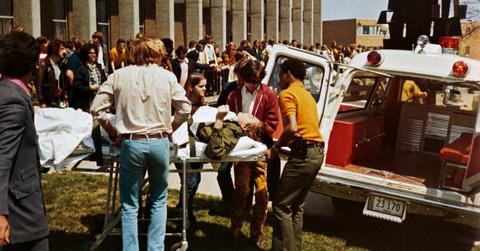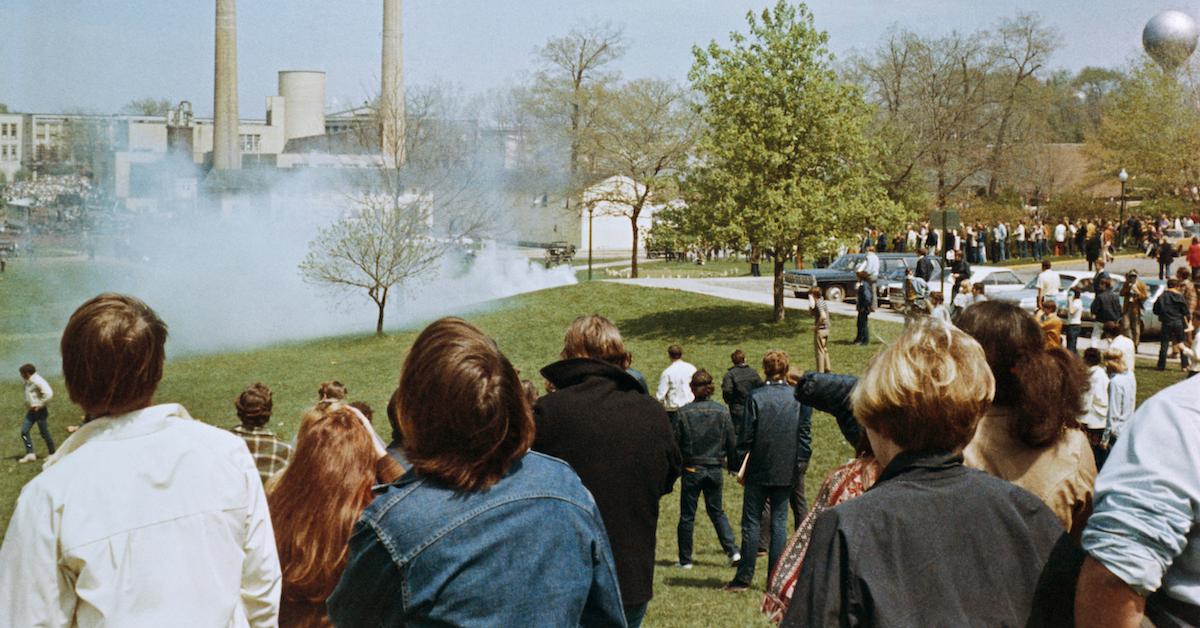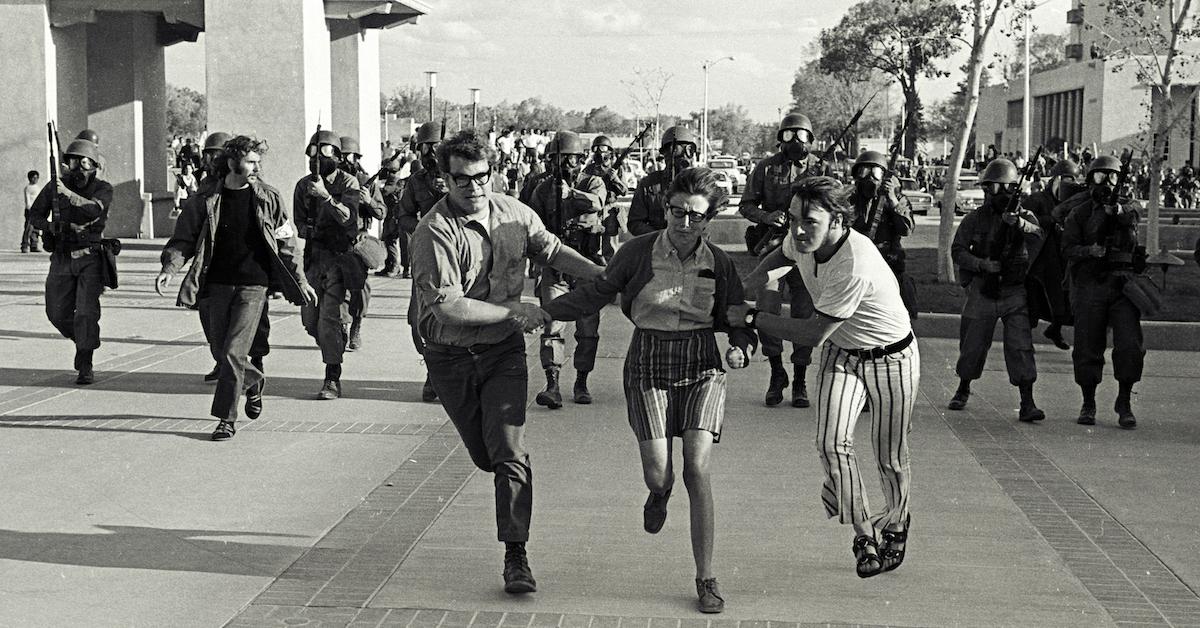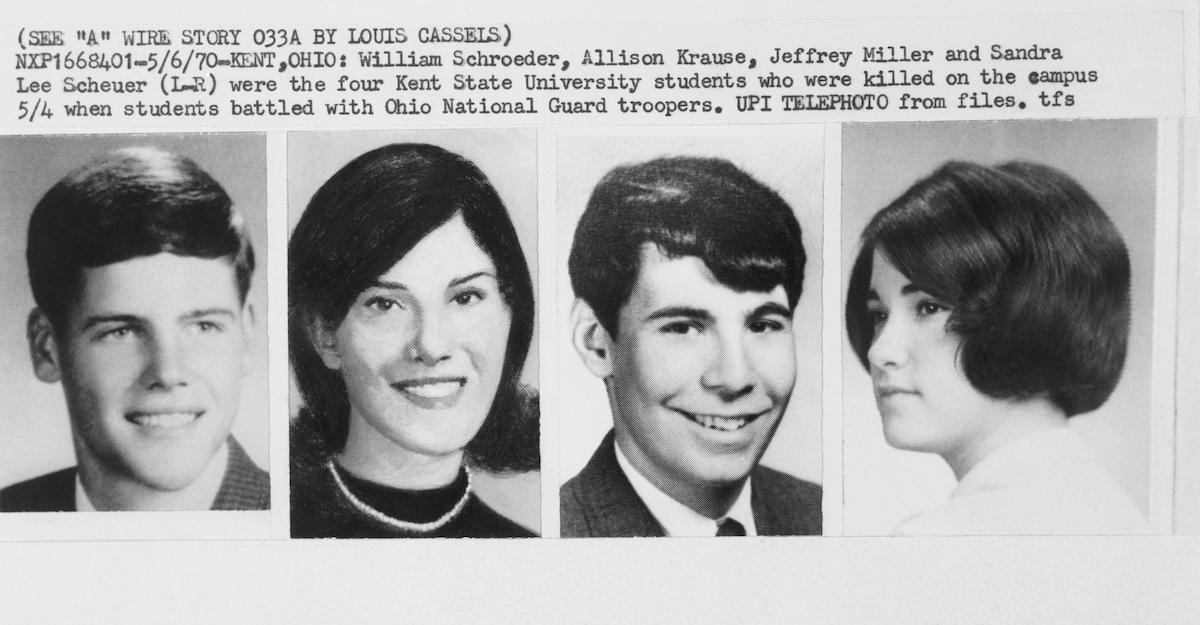Why Kent State University Erupted Into Chaos 50 Years Ago
Updated May 4 2020, 1:35 p.m. ET

Fifty years ago, on May 4, 1970, four students were killed and another nine wounded at Kent State University by the Ohio National Guard. A lot has changed in the world in those five decades, but unfortunately, violent responses to unarmed protestors still occur, despite the many lessons for law enforcement that the massacre offered.
Here's why the Kent State shooting happened and why we still reflect on it decades later.
Why did the Kent State shooting happen?
To understand what happened at Kent State, you first have to know the context. Kent State had been home to a robust protest movement for several years amid the conflict in Vietnam, but demonstrations grew in size and emotion in 1970 when the U.S. invaded Cambodia. After a large demonstration of more than 500 students on May 1, another was scheduled for May 4.

In response to an uptick in vandalism in the college town's nightlife area and reported threats to local businesses, the Mayor of Kent, LeRoy Satrom, called a state of emergency in the city and requested Ohio governor Jim Rhoades send in National Guard troops to control the situation.
He called the protestors un-American and declared that no demonstrations would be permitted and the university itself also tried to curtail the rally. But 2,000 protestors still showed up and were met with National Guard troops who ordered them to disperse.
Shortly before noon, the National Guard began throwing canisters of tear gas into the crowd who refused to stand down. In response, protestors threw the canisters back at the Guards, who wore gas masks, and also threw rocks and shouted insults at the armed soldiers. A group of more than 70 Guardsmen moved toward the crowd with bayonetted rifles, forcing them to retreat down a hill and toward a parking lot.

The first shots reportedly came at 12:24 p.m. from Sergeant Myron Pryor, who fired a pistol into the crowd. Possibly in response to hearing that gunfire, 27 other Guardsmen began to fire their rifles.
Two of the four students killed were not involved in the protest.
The four fatalities in the shooting were Allison Krause, Jeffrey Miller, Sandra Scheuer, and William Knox Schroeder, the latter two of whom were not part of the demonstration but rather were walking from class. Of the 13 dead and wounded, the closest any of the victims was in proximity to a Guardsman was 72 feet. At least two were shot from behind including Dean R. Kahler, who was standing 300 feet away from the Guardsmen and who was permanently paralyzed as a result of his injuries.

The National Guard alleged a sniper fired on them, prompting the assault.
In the aftermath of the massacre, people sought answers to why the Guard fired into the crowd, and protests in response to the shooting cropped across the nation on campuses and in a massive protest in Washington D.C. to both the war and the Kent State student deaths. The Guard alleged that a sniper had fired onto them, but no evidence was ever uncovered to support the claim.
Nevertheless, immediately after the protests, the majority of Kent residents were unsympathetic to the students and felt they brought the tragedy on themselves, with some even saying, "They should have shot more of them." Decades later, though, the massacre is seen as an unfortunate example of excessive force as well as the beginning of a mainstream disapproval of continued U.S. involvement in Vietnam and Cambodia.